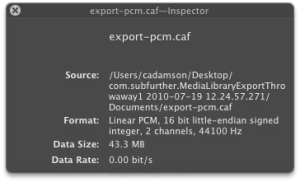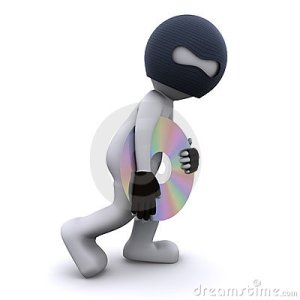Maybe I take back that previous blog title that the internet is the new hip place to be at. Maybe it’s actually a bit uncool, and business like, as Stallabrass calls it the “online clash of culture and commerce” (2003).
As you can arguably find anything online (Bell, 2001) the internet has provided a platform for e-commerce, pop up adverts and spam. The commercialization of the internet, is described well by this post in that “The commercialization of the Internet turns this instrument into the greatest publishing machine and the greatest book store in the world.”
Perhaps that is exactly the problem, anyone who is anyone can contribute to the great knowledge of the web with almost free reign. Keen describes the death of the internet, whereby blogs are getting churned out so regularly, the over population will then end up confusing popular opinion “about everything from politics, to commerce, to arts and culture.”(2007) due to the problem that people are so easily able to become the writer aswell as the reader of material on the internet (Keen, 2007) .
Bolter investigates the problem of the internet being a platform for all voices to be heard, in that “the publication in this medium is both easy and almost restricted. The transition from reader to writer is completely natural” (1991:29). What this demonstrates is that the messages and replies can blur and that there is little concern for the original message.
Bolter further discusses that pre-internet times, when we receive a letter, we can physically hold it in our hands, where as stealing information through it being passed seems to loose its touch (2009). Reminding me of what Geraint Williams (2013) had once described that when somebody steals music online they see this……
and not this…..
But perhaps they should not identify with the second image as Lawrence Lessig suggests. Whereby Lessig’s definition of piracy is that downloading material is not theft as it does not directly takes away the hard copy, it merely just replicates it. The concept of copyright is far more blurred as, Araya suggests, where by “each individual naturally creates from previous creations” (2011:101). For instance, let us look at The Grey Album Gate, whereby the DJ and creator of the album could not get rights for The Beatles samples used for the album; despite The Beatles allowing DJ Danger Mouse to their music. Arguably, this is stifling creativity.
This is where Creative Commons steps in, whereby it gives authors the right for their intellectual content to be copied, distributed and create more art with some of the rights reserved, enabling “individuals in the digital culture scenario not only consume information but also produce it”.
An explanation of Creative Commons.
So is this the problem to a commercialized internet stifling creativity? Perhaps not, as Gordon – Murnane lists the fundamental problems surrounding Creative Commons that is worth addressing and people should be aware of. Similarly, Bobbi Newman describes the problem she encountered, whereby it was almost too easy to change the license.
Perhaps there is no easy solution? Perhaps the clash, Stallarman describes, of culture and commerce cannot both reside together. Key figure on this subject William Patry, sees the friction and blurred boundaries of the copyright laws too. When Patry asks us to redefine what copy means, he also concludes by saying “There is no hope for the future if it is merely a continuation of a failed past.”
Bibliography
Araya, Elizabeth Roxana Mass. (2011). Creative commons: A convergence model between the ideal of commons and the possibilities of creation in contemporary times, opposed to copyright impediments. . Information Services & Use. 31 (3/4), 101-109.
Bolter, David Jay (1991). Writing Space: The Computer, Hypertext and the History. Lawrence Erlbaum Associates: Oxford.
Gordon- Murnane, Laura . (2010). Creative Commons: Copyright Tools for the 21st Century. Available: http://www.infotoday.com/online/jan10/Gordon-Murnane.shtml. Last accessed 11 Dec 2013.
Keen, A (2007). The Cult of the Amateur: How Today’s Internet Is Killing Our Culture. London: Currency
Lessig, Lawrence . (2013). Free Culture. Available: http://www.authorama.com/free-culture-8.html. Last accessed 11 Dec 2013.
Newman, Bobbi. (2013). The Danger of Using Creative Commons Flickr Photos in Presentations. Available: http://librarianbyday.net/2013/01/27/the-danger-of-using-creative-commons-flickr-photos-in-presentations/. Last accessed 11 Dec 2013.
Patry, William. (2012). We need to redefine what ‘copy’ means.Available: http://www.theguardian.com/law/2012/mar/13/how-to-fix-copyright-extract. Last accessed 11 Dec 2013.
Stallabrass, J (2003). Internet Art : The Online Clash of Culture and Commerce. Tate Publishing: London.
Umstätter, Walter . (1996). The commercialisation of the Internet.Available: http://www.ib.hu-berlin.de/~wumsta/pub95.html. Last accessed 11 Dec 2013.
Walker, Robert. (2004). The Grey Album. Available: http://www.nytimes.com/2004/03/21/magazine/21CONSUMED.html. Last accessed 11 Dec 2013.
Williams, Geraint (2013). Ethical Hacking. Presentation at The University of Bedfordshire. 20th November, 2013


